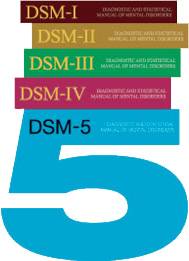

With this in mind, the next section follows with an overview of trauma-related psychiatric disorders. Furthermore, recent evidence has shown that trauma experience is associated with altered functional connectivity between the amygdala, and medial prefrontal cortex (mPFC), insula, and dCCA, furthering the thesis of an interplay between prefrontal regions and limbic structures. A wealth of research on neuro-functional alterations associated with trauma-exposure revealed patterns of increased amygdala activity in response to threatening stimuli, and simultaneous decreased activity in prefrontal areas of the cortex that downregulates the amygdala, as well as hyperactive hippocampus. In some cases, the progressive impact of traumatic experience may lead to a diagnosis of debilitating psychiatric disorders such as BPD, complex PTSD or disorders of extreme stress, not otherwise specified (DESNOS). Therein, the level of maternal support in childhood was shown to determine hippocampus volume in adulthood, whilst childhood poverty was associated with reduced white matter, cortical gray matter, and hippocampal volume. As harmful pathways are etched deep into the brain following an exposure to trauma, neuroimaging studies allow to index the extend of associated cerebral damage. Owing to the advent of neuroimaging techniques it is well-established that human experiences, whether traumatic or therapeutic, have measurable influences on the brain structure and function. The impact of trauma on the human psyche has received considerable research attention, starting with the thesis that it is a process taking place within the attachment relationships and separation.
BORDERLINE PERSONALITY DISORDER DSM 5 SERIES
Meaning ‘stroke or wound’ in Greek, in psychopathology trauma refers to a lesion or an insult to the psychic organism induced by a stressor or a series of noxious events that occur suddenly and in a disruptive way in a subject’s life.

To date, it is deemed a silent epidemic defined in DSM-5 as a result of either direct or indirect exposure to actual or threatened serious injury or sexual violence, death or a threatened death. The concept of trauma first entered the DSM-III as a rare, catastrophic stressor outside the range of usual human experience, apt to evoke significant symptoms of distress in most people. Herein we describe the psychological and epigenetic mechanisms affected by childhood trauma and altered in BPD patients. Although no research can predict with certainty which trauma will translate into symptoms, there are indications as to who is more at risk of developing a trauma-related disorder. A wealth of scientific literature links the onset of BPD to the combination between genetic and environmental factors (G×E), in particular between biological vulnerabilities and the exposure to traumatic experiences during childhood. Furthermore, the last decade has seen important contribution of neuroscientific research in shedding light on the neurobiological correlates of traumatic experiences. Therein experiences of childhood abuse and neglect take on an important etiological role, generating severely disorganized attachment relationships, which in turn affect the development of emotional regulation systems, and significantly inhibit the development of mentalization and metacognitive skills. Borderline personality disorder (BPD) is deemed to be a form of acute reaction to childhood trauma. Traumatic events are reported in a large percentage of the population, however, only in some individuals it will lead to a diagnosable trauma-related disorder.


 0 kommentar(er)
0 kommentar(er)
